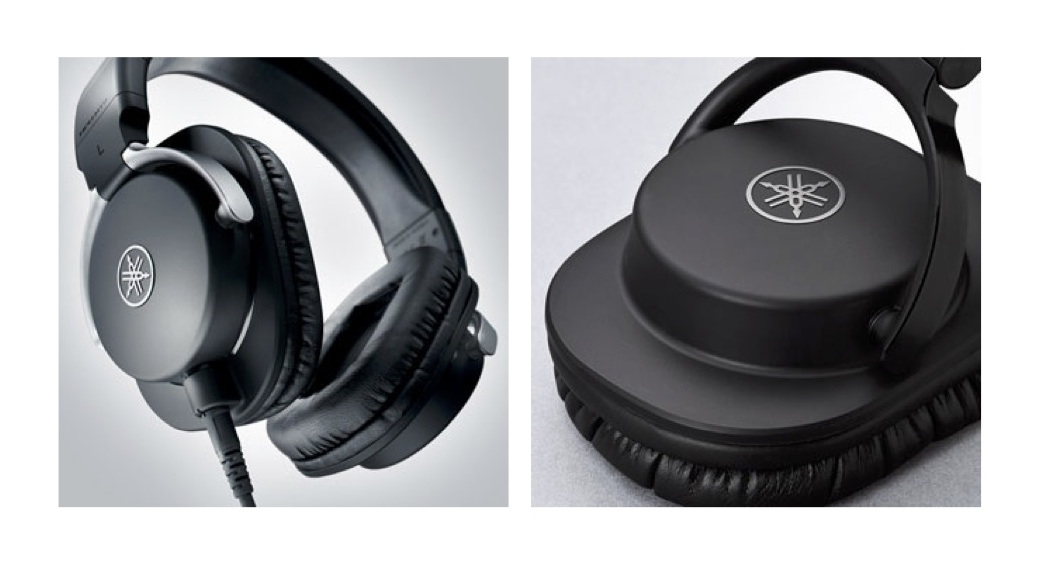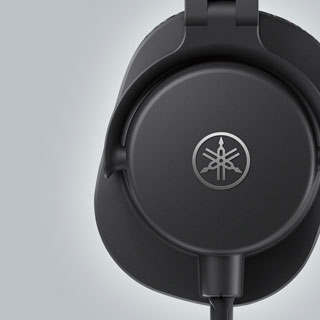New Gear Review: HPH-MT8 & HPH-MT5 Headphones by Yamaha

With the HPH-MT8 (left) and HPH-MT5 (right) headphones, Yamaha offers monitoring solutions for various tasks in the studio.
Yamaha has a long history of providing studio monitor solutions.
With a pair of their legendary NS-10M monitors in virtually every commercial studio, they have become a trusted brand among music makers of all kinds and have capitalized on that name recognition in recent years by expanding and upgrading their monitor line.
Now, Yamaha aims to make their mark on the headphone market with their HPH-MT8 and HPH-MT5
Features
The HPH-MT8 headphones feature custom drivers with an impressive frequency range of 15Hz to 28kHz. They are closed-back, comfortable, and should cover even the largest ears with excellent isolation. Die-cast aluminum support arms hold the cushioned leather ear pads, which are useful for long bouts of mixing or a long day of tracking.
The MT8’s are easily adjustable and come with two lock-in-place connector cables. One is a 3-meter straight cable, and the second is an “approximately” 3-meter coiled cable. It’s great to have an extra connection when your clients or bandmates tend to find a way to break every pair of headphones on the shelf. Also included is a threaded 1/4″ gold-plated adaptor and a nifty carrying case for mixers on the go. In opening the box, the careful presentation makes you feel like these are special.
The little brother to the MT8’s, the Yamaha HPH-MT5 headphones are jet black, and also feature a traditional closed back, over-ear design. The MT5’s are stocked with a single 3 meter straight cable, gold-plated adaptor and a Yamaha carrying bag. Similar in style and shape to the MT8’s but with a little less glamour, the MT5’s also feature custom drivers with a slightly smaller frequency range of 20Hz to 20kHz.
One highlighted feature that both models share is the “rotatable” earcup. You can rotate one ear 180 degrees for “single-ear monitoring”. I find that if I’m monitoring with one ear, I usually just tuck one cup behind my ear so there’s no bleed. But, the headphones are very flexible and easy to adjust for fit.
In Use
Now let’s take the MT8’s for a ride. In shuffling through my playlist on iTunes at home, I listened through song clips from Madonna, Seal, Dinosaur Jr., The Beach Boys, Notorious B.I.G. and Pavement. The clarity was on point; the MT8’s sounded open and clear with an accurate bass response.
Putting the MT8’s to use in the studio, I tracked an acoustic guitar to a fairly loud mix and there was absolutely no bleed… great! Next, I tracked a tambourine for the same song. Easy! I think my timing was better than ever. (Whether that was because of the headphones or not, I have no idea.)
For mixing, the I found the MT8’s outperformed another set of popular headphones which share a similar price point. The fact that the bass is tight and not small makes me feel like I can trust the low end. They’re very clear, and I could certainly make these my go-to monitoring headphones when I’m working away from the studio. Thumbs up!

The robust build quality of the HPH-MT5’s make them a strong choice for tracking scenarios where headphones may take a bit more of a beating than in a mix situation.
Testing the HPH-MT5’s at home, I shuffled through a little Led Zeppelin, Judas Priest, Missy Elliott, John Mayer, Johnny Cash and Parliament. It was during this listen that I heard the cabinet vibrating in the bass entrance to Zeppelin’s “Dazed and Confused” for the first time.
The MT5’s are clear, but with a more center-focused sound. They’re not as wide as mixing headphones, which is probably inherent in the design, considering these would be primarily used by clients in the studio for monitoring their performance during tracking.
The MT5’s remind me of other headphones around the $100 price point that I’ve given to clients for monitoring. These however, seem a little more durable, but have a slightly dark quality to the sound. Their durability will come in handy when clients inevitably drop them, step on them, or walk away from the headphone station with the headphones still attached to their heads.
In studio use, I tracked a female vocal to an acoustic guitar performance with a fairly loud click track. The client gave an excellent performance and was pleased with the comfort and sonics of the MT5’s. The closed-back design succeeded in keeping the sound inside; there was very little bleed. In tracking drums with the MT5’s, I played to a click for more than an hour without any fatigue, and the isolation was great!
To Be Critical
One shared con for both of these sets of cans is the connector cables; there are different connections at each end. The jack that fits into the headphones is a smaller, “mini plug,” while the reverse end is a standard 1/8″ jack. If you were to need a replacement, you wouldn’t be able to throw in just any 1/8″ cable—you’d have to order one from Yamaha.
That being said, this is a pretty common problem I have with most modern headphones, and that’s a fact, “Jack.” I would encourage all headphone companies to consider a one-size, standard 1/8” jack for both ends of the cable.
Also, if you’re working in a dark environment, I’d suggest you put a piece of glow in the dark or fluorescent tape on the MT5’s because they are as black as night. I set mine on the black leather studio couch between takes and they disappeared.
Summing it Up
Overall, the Yamaha HPH-MT8’s have an accurate sound, good bass response and a clear stereo image. I would consider these a great pair of mixing headphones for the $199 price tag. And for that client who has the best ears in the band, they’d really love to track with these… I sure did.
Sonically, the MT5’s don’t sound quite as open as the MT8’s, and are darker by comparison. That said, they do possess a full sound and good low end response. They wouldn’t necessarily be my first choice for critical listening, but at their $99 price point they’re a good fit for active engineers and studios looking for durable, quality headphones that can take a beating and not break the budget.
Please note: When you buy products through links on this page, we may earn an affiliate commission.






